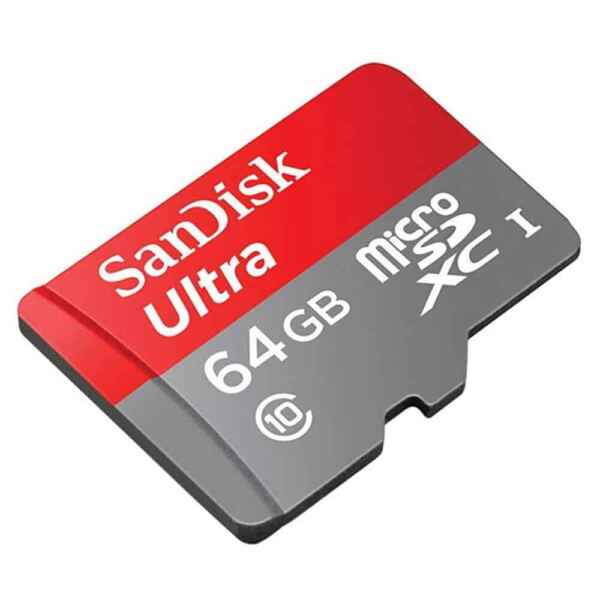How to increase storage with a SD memory card on an Android phone or tablet?
SD cards can be a great way to expand the internal storage capacity of your Android phone or tablet. You will learn how to use SD card as internal storage on Android. However, before you can start using your SD card for storage, you need to format it as internal storage. Once the card is formatted, you can move files to it, such as photos, music, and videos.
Most of the Android phone and tablets have a SD card slot so you can add more storage space. Check your phone or tablet specifications for details, but most will handle memory cards up to 512 GB, some newer Android devices can use up to a 2TB card. Which adds a ton of portable storage space for pictures, MP3 files, or anything else. You should note that iPhone doesn’t have the option to increase storage by adding a memory card.
To Insert and format an SD card as internal storage:
The location for the SD card varies on each manufacturer and model of Android phone or tablet, but it will be on one of the sides or edges of the Android device. Most likely, on newer phones and tablets, the memory card fits on the same tray as the SIM card. There will be a pull-out cover or tray that you need to take out first, then insert the memory card. The card can only be inserted one way, so do not force it. If you get resistance putting the card in, then turn it around and try a different side. The card will easily slide in and lock in place. To remove the card, push it in, which unlocks it, then pull it out or remove the card tray.
Format the SD card before you can use it.
- Insert the SD card into your Android device.
- Open the Settings app.
- Tap Storage.
- Tap the SD card.
- Tap the three dots in the top right corner.
- Tap Storage settings.
- Tap Format as internal.
- Tap Erase & Format.
Note: Formatting the SD card as internal storage will erase all of the data on the card. Make sure to back up any important files before proceeding.
Once the SD card is formatted, you can start moving files to it:
- Open the File Manager app.
- Touch the three lines in the top left corner.
- Touch Internal storage.
- Touch the file or folder you want to move.
- Touch the three dots in the top right corner.
- Touch Move or copy.
- Touch SD card or External Storage
- Touch the folder where you want to move the file or folder.
- Touch Move.
Move apps to the SD card to free up storage space:
Can I move all my existing apps to the SD card?
Not all apps can be moved. System apps and some third-party apps generally cannot. Check the app info in Settings > Apps & notifications to see if the “Move to SD card” option is available.
- Open Settings
- Scroll down and Tap on Apps
- Look for an app you want to move to the SD card and Tap on it to open
- On the bottom of the screen, Tap on Move to SD card
You can also set the card as default storage location so new apps will be installed on the SD card by default:
- Open the Google Play Store app.
- Touch the three lines in the top left corner.
- Touch Settings.
- Touch App preferences.
- Touch Storage location.
- Touch SD card.
Now, all new apps will be installed on the SD card by default.
Here are some tips for using an SD card as storage on Android:
- Use a high-quality SD card. SD cards can vary in quality and performance, so it’s important to choose a good one.
- Keep your SD card formatted. If you ever format your SD card for another device, such as a camera, you will need to reformat it as internal storage again before you can use it on your Android device.
- Back up your SD card regularly. SD cards can fail, so it’s important to back up your data regularly. How to backup an Android phone or tablet?
- You can leave the memory card in your Android device at all times, it doesn’t need to be removed.
- To remove the memory card, the safest method it to first go to Setup, select Storage, then Unmount the SD card. This way, you will be assured that nothing is using the memory card at the time you remove it. When you insert a card again, it automatically is mounted.
By following these tips, you can use an SD card to expand the storage capacity of your Android phone or tablet and keep your files safe and secure.
Frequently asked questions and answers for using an SD card as Internal Storage on Android:
Q: Can I use any SD card as internal storage?
A: No, not all SD cards are created equal. You need a high-quality, high-speed card with an A2 rating or better for optimal performance. Look for UHS-I or UHS-III cards with at least 64GB of storage.
Q: How do I format an SD card for internal storage?
A: The process varies slightly depending on your Android version and device. Generally, go to Settings > Storage > SD Card > Storage settings > Format as internal. Remember, this erases everything on the card, so back up important data first!
Q: Does using an SD card for internal storage make my phone faster?
A: It can, if the SD card is faster than your phone’s built-in storage. However, keep in mind that SD cards are inherently slower than internal storage, so you might experience some performance decrease in demanding tasks.
Q: What happens if I remove the SD card?
A: Apps stored on the SD card won’t function, and you might encounter various errors. It’s best to keep the SD card inserted if you use it for internal storage.
Q: What are the risks of using an SD card for internal storage?
A: SD cards are more prone to physical damage and data loss than internal storage. Additionally, formatting the card as internal locks it to your device, making it unusable on other devices.
Q: Is it better to use an SD card or expand internal storage with a new phone?
A: If you need significantly more storage, upgrading your phone will likely offer better performance and reliability. However, for a temporary boost or cost-effective solution, using an SD card can be a viable option.
Q: My phone doesn’t have the “Format as internal” option. What can I do?
A: Not all devices support adoptable storage (using an SD card as internal). Check your phone’s specifications or manufacturer’s website to confirm.
Bonus tip: Regularly back up your data, whether on the SD card or internal storage, to avoid data loss in case of any technical issues.
Common problems and solutions for using an SD card as Internal Storage on Android:
Problem: The SD card is not recognized by the Android device.
Solution:
- Make sure that the SD card is properly inserted into the Android device.
- Try restarting the Android device.
- Try using a different SD card.
- Try formatting the SD card as internal storage.
Problem: The SD card is corrupted.
Solution:
- Try formatting the SD card.
- If formatting the SD card does not work, you may need to purchase a new SD card.
Problem: The SD card is slow.
Solution:
- Make sure that the SD card is a high-quality card.
- Try moving files to and from the SD card using a USB cable instead of Wi-Fi.
- Try moving files to the SD card one at a time instead of in bulk.
Problem: The SD card is full.
Solution:
- Move files from the SD card to the internal storage of the Android device.
- Delete files from the SD card.
- Purchase a new SD card with more storage capacity.
Problem: Apps cannot be installed on the SD card.
Solution:
- Make sure that the SD card is formatted as internal storage.
- Make sure that the app supports installation on the SD card.
Additional helpful information:
There are many brands, sizes and quality of SD cards – Click here to read about which SD memory card you should use.
You can also use an USB flash drive on your Android phone or tablet – How to directly connect an USB storage device to your Type-C port?




